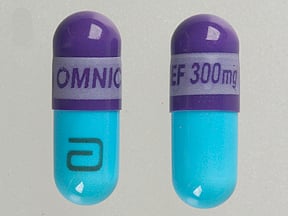
Cefdinir Coupons & Savings Card – Discount Prices from $12.66
My prescription
Edit
300MG, Cefdinir (20 Capsules)
Select pharmacy

CVS
$22.84
COUPON PRICE
Walmart
$12.66
COUPON PRICE
Walgreens
$18.02
COUPON PRICE
Albertsons
$21.02
COUPON PRICEFree Cefdinir Savings Card

Walmart
$12.66
Show this coupon to your pharmacist
ID
LH8DF917BC
PCN
CHIPPO
BIN
019876
GRP
LHX
This coupon is not insurance
Related cephalosporin antibiotics prescriptions
More prescriptions for upper respiratory infection
Related cephalosporin antibiotics prescriptions
More prescriptions for upper respiratory infection
Cefdinir dosage forms
Dosage Quantity Price from Per unit 300MG 20 Capsules $12.66 $0.63 300MG 1 Capsule $3.01 $3.01 300MG 8 Capsules $6.56 $0.82 300MG 10 Capsules $7.58 $0.76 300MG 14 Capsules $9.61 $0.69 300MG 16 Capsules $10.62 $0.66 300MG 30 Capsules $17.73 $0.59 300MG 60 Capsules $32.52 $0.54
| Dosage | Quantity | Price from | Per unit |
|---|---|---|---|
| 300MG | 20 Capsules | $12.66 | $0.63 |
| 300MG | 1 Capsule | $3.01 | $3.01 |
| 300MG | 8 Capsules | $6.56 | $0.82 |
| 300MG | 10 Capsules | $7.58 | $0.76 |
| 300MG | 14 Capsules | $9.61 | $0.69 |
| 300MG | 16 Capsules | $10.62 | $0.66 |
| 300MG | 30 Capsules | $17.73 | $0.59 |
| 300MG | 60 Capsules | $32.52 | $0.54 |
Cefdinir Warnings
When using this medication, it is crucial to be aware of certain safety warnings and contraindications to avoid potential health risks. Below are the key points you should consider. If you have any questions or concerns, please consult your healthcare provider.
Severe Allergic Reactions: There is a possibility of experiencing severe allergic reactions to cefdinir, which can be life-threatening. Symptoms may include facial swelling, shock, and anaphylaxis, characterized by the closing of the throat. It is essential to inform your healthcare provider if you have a known allergy to antibiotics, particularly penicillin or other cephalosporin antibiotics, to assess your risk. Immediate medical attention is necessary if you develop hives, a rash, red skin, swelling of the lips or tongue, or difficulty breathing after taking cefdinir.
Diarrhea from Clostridioides difficile Infection: The use of antibiotics, including cefdinir, can increase the risk of infection with Clostridioides difficile (C. diff), a bacterium that can cause severe diarrhea. This occurs because antibiotics can disrupt the normal balance of bacteria in the stomach and intestines, allowing C. diff to proliferate. In some cases, this infection can be life-threatening.
Development of Drug-Resistant Bacteria: To minimize the risk of developing drug-resistant bacteria, it is important to take cefdinir exactly as prescribed by your healthcare provider. Deviating from the prescribed duration or using cefdinir for conditions other than those indicated can lead to serious, potentially life-threatening infections that are harder to treat.
Contraindications:
- Do not use cefdinir if you have a severe allergy to cephalosporin antibiotics, as this could pose significant health risks. Always consult with your healthcare provider if you have any concerns regarding this medication.
Cefdinir Side Effects
Common side effects:
- Diarrhea
- Nausea
- Headache
- Stomach pain
- Change in stool color
Less common but important to monitor:
- Vaginal yeast infections
- Oral thrush
Serious side effects:
- Signs of liver disease
- Unusual tiredness
- Signs of infection
- Easy bruising or bleeding
- Signs of kidney problems
- Bacterial intestinal condition linked to C. difficile
- Severe allergic reaction
Cefdinir Interactions
Interactions with high risk of serious adverse effects and should be avoided:
- Cholera Vaccine, Live
- Warfarin
- Desogestrel
- Dienogest
- Drospirenone
- Estradiol
- Ethinyl Estradiol
- Ethynodiol
- Gestodene
- Levonorgestrel
- Mestranol
- Nomegestrol
- Norethindrone
- Norgestimate
- Norgestrel
Interactions with moderate risk that may require dose adjustment, closer monitoring, or timing changes:
